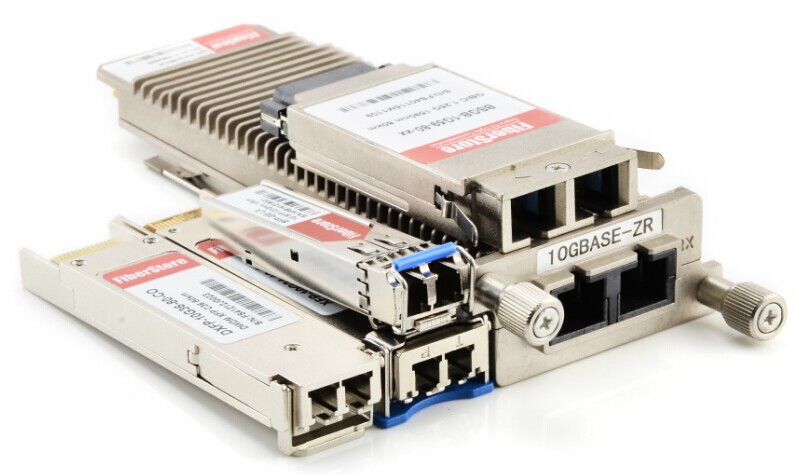From the origin of 10G Ethernet, 10G optical transceivers have been developed along the way to meet the increasing demand for higher-performance servers, storage and interconnects. However, selecting the best type of 10G optical transceivers is not always easy. There are a variety of factors that must be considered. To be able to select a matching transceiver for a given application and hardware, all below stated parameters must be considered.

Transceiver “form-factor” / MSA Type
The transceiver has to mechanically and electrically fit into a given switch, router etc. Transceiver MSAs define mechanical form factors including electric interface as well as power consumption and cable connector types. XENPAK is the first MSA for 10 Gigabit Ethernet. The XENPAK MSA defines a fiber optic or wired transceiver module which conforms to the 10 Gigabit Ethernet standard of the IEEE 802.3 working group. Then X2 followed with smaller size. XFP specification was launched after X2 with more contact size. SFP and SFP+ are the newest and the most common form factors which enable 10G Ethernet.
Transport Media
Choose the right 10G optical transceivers according to the transport media, namely the fiber type. There are a number of 10 Gb/s media systems, with a few of the most widely used systems specified in the standard described here:
- 10GBASE-CX4
10 Gb/s Ethernet over short-range copper cable assemblies (15 m maximum). - 10GBASE-T
10 Gb/s Ethernet over unshielded and shielded twisted-pair cables. Category 6A or better twisted-pair cables are required to reach the maximum distance specified. - 10GBASE-SR
10 Gb/s Ethernet over short-range multimode fiber optic cables. - 10GBASE-LR
10 Gb/s Ethernet over long-range single-mode fiber optic cables.
Connector Type
Choose the right transceivers which are compliant with the proper connectors. The connectors widely-used mainly have following types: Duplex LC connector, MPO connector, and MTP connector (a high performance MPO connector). For instance, HP 455883-B21 10GBASE-SR SFP+ transceiver module provided by Fiberstore is compliant with the Duplex LC connector.
Transmission Distance
When we choose the ideal 10G optical transceivers, we must consider the transmission distance and the reach requirements we need in reality. The most common types of transceivers divided by its transmission distance can reach up to 100m, 150m, 300m, 400m, 1km, 2km, 10km, 40km, etc. For example, Cisco SFP-10G-SR compatible 10GBASE-SR SFP+ transceiver supports link lengths of 300m over multimode fiber cables. And Juniper XFP-10G-L-OC192-SR1 compatible 10GBASE-LR transceiver provides superior performance for SONET /SDH and Ethernet applications at up to 10km links.
Wavelength
The wavelength the transceivers operate with is an important factor in choosing the proper 10G optical transceivers. For instance, Fiberstore's 10G CWDM XFP is designed for single mode fiber and operates at a nominal wavelength of CWDM wavelength. There are fourteen center wavelengths available from 1350nm to 1610nm, with each step 20nm.
Fiberstore provides various types of 10G optical transceivers including single-mode and multi-mode with different channels and wavelengths. In order to achieve a fast and successful selection of the 10G optical transceivers, we should consider all the above-mentioned factors comprehensively.
No comments:
Post a Comment